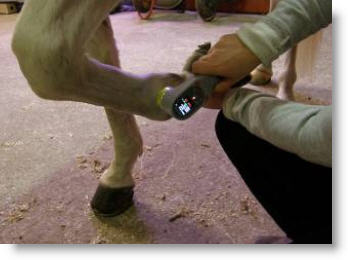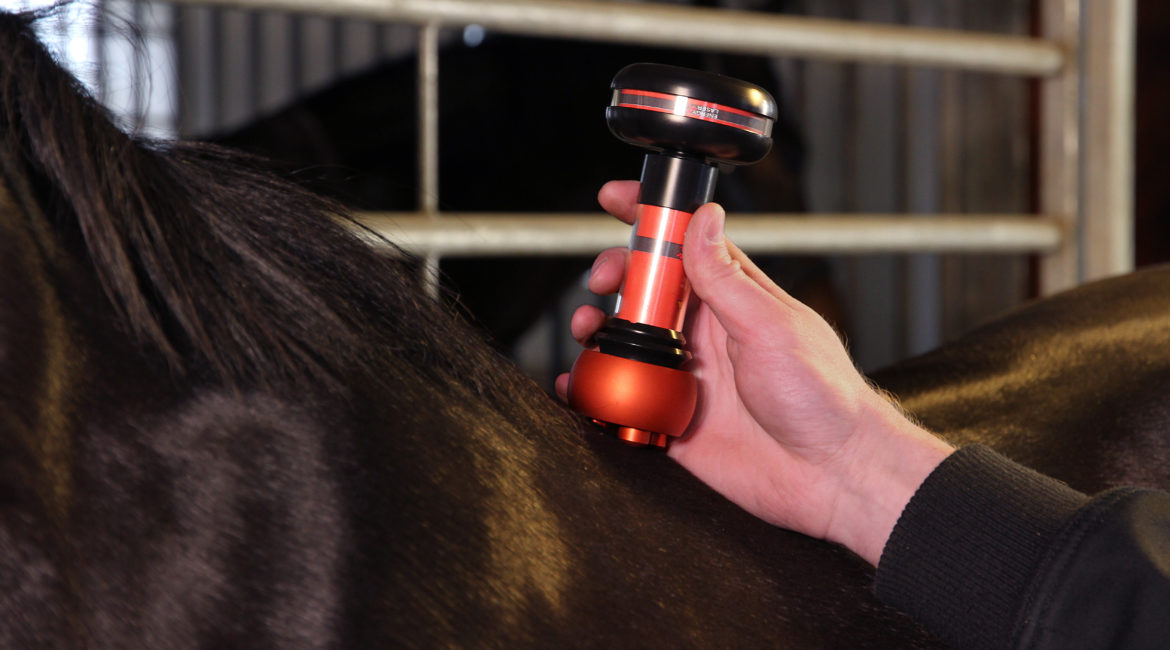Equine Therapy: How It Helps Build Confidence and Psychological Toughness
Wiki Article
Evaluating the Effectiveness of Laser Therapy in Horse Treatment for Injury Rehabilitation
The examination of laser treatment's efficiency in equine injury rehab pivots on several elements, including recuperation time, pain mitigation, and cells regrowth. Veterinarians often observe exceptional results with laser therapy compared to standard approaches, placing it as a crucial element in equine care.Understanding Laser Therapy
Laser treatment has actually ended up being a critical tool in vet medication, especially in the treatment of equine conditions. Known for its non-invasive nature and efficacy, laser treatment includes the application of particular wavelengths of light to stimulate cells repair service and minimize inflammation. This therapeutic method is progressively preferred for its capability to speed up the recovery procedure in steeds experiencing from a selection of musculoskeletal injuries and persistent conditions.The primary system behind laser treatment is its capacity to enhance cellular features. In addition, laser therapy promotes vasodilation, enhancing blood circulation and oxygen distribution to damaged tissues, therefore quickening recovery.
In equine medicine, laser therapy is specifically beneficial for conditions such as tendonitis, osteoarthritis, and injury recovery. The strategy is lauded for its pain-relieving homes, permitting steeds to regain wheelchair and feature a lot more swiftly. Vets additionally value its marginal negative effects compared to other therapy techniques, making it a reliable and safe option for equine care.

Exactly How Laser Therapy Works

Upon absorption, these photons activate a series of biochemical changes, enhancing mitochondrial function and causing enhanced adenosine triphosphate (ATP) manufacturing. This rise in ATP accelerates mobile metabolism, advertising cells repair and regeneration. Additionally, laser treatment modulates inflammatory actions by affecting cytokine levels and minimizing oxidative stress and anxiety, consequently reducing discomfort and swelling.
One more considerable aspect of laser treatment is its function in boosting microcirculation. The therapy promotes vasodilation, improving blood flow and oxygen delivery to broken cells (Equine Therapy). This facilitates the removal of cellular debris and supports the proliferation of fibroblasts and collagen synthesis, critical for wound recovery
Clinical Proof
The efficacy of laser therapy in equine therapy has actually been confirmed through numerous clinical research studies, showcasing its therapeutic prospective throughout a series of conditions. Numerous controlled trials and empirical researches have actually documented considerable renovations in tissue repair work, discomfort decrease, and overall rehab timelines. A research study performed by Turner et al. (2012) showed that horses treated with low-level laser therapy (LLLT) for tendon injuries exhibited sped up recovery contrasted to those obtaining standard treatments. The research highlighted a significant decrease in swelling and boosted collagen development.In a similar way, research by Johnson and coworkers (2015) concentrated on equine muscle mass injuries, disclosing that laser therapy significantly accelerated muscle fiber regeneration and reduced muscle mass stiffness. Scientific assessments have actually shown that laser treatment can ease persistent conditions such as osteoarthritis.
Veterinarian Insights

Veterinarians likewise appreciate the Home Page adaptability of laser therapy. She points out that laser therapy can be customized to the details demands of each equine, making sure ideal outcomes.
Moreover, vets value the capacity to integrate these details laser therapy with other therapy techniques. This multimodal technique can improve general treatment efficiency, supplying a detailed service for equine rehabilitation. Such endorsements from skilled experts underscore the growing approval and application of laser therapy in equine medicine.
Practical Factors To Consider
A vital facet of applying laser therapy in equine treatment involves recognizing the functional considerations that guarantee its effectiveness and safety. Firstly, it is vital to choose the appropriate laser tool, as various kinds differ in wavelength, power, and penetration deepness. Equine Therapy. Veterinarians have to be well-versed in these parameters to customize therapy protocols successfully to each injury typeIn addition, the frequency and period of laser treatment sessions need cautious preparation to make best use of restorative advantages while minimizing any type of potential negative results. Consistent tracking of the steed's response to treatment can direct essential changes in the therapy program. Developing a secure and regulated environment during treatments is also necessary to protect against accidental exposure to laser emissions, which might hurt both the steed and the trainer.
Educating and qualification of personnel administering laser therapy are critical to make sure appropriate method and to support security requirements. Furthermore, preserving precise documents of each session, consisting of laser settings and observed results, is crucial for examining the general efficiency of the treatment find more information and for making data-driven decisions.
Conclusion
Laser therapy has become an efficient technique in equine injury rehab, providing substantial benefits in recovery time, discomfort alleviation, and cells healing. Medical studies underscore substantial renovations in problems such as tendonitis and osteoarthritis, credited to improved cellular feature and raised ATP manufacturing. Veterinarian monitorings corroborate these searchings for, highlighting remarkable results compared to typical treatments. For optimal results, continual tracking and individualized therapy protocols remain crucial in leveraging the complete potential of laser treatment in equine care.Report this wiki page